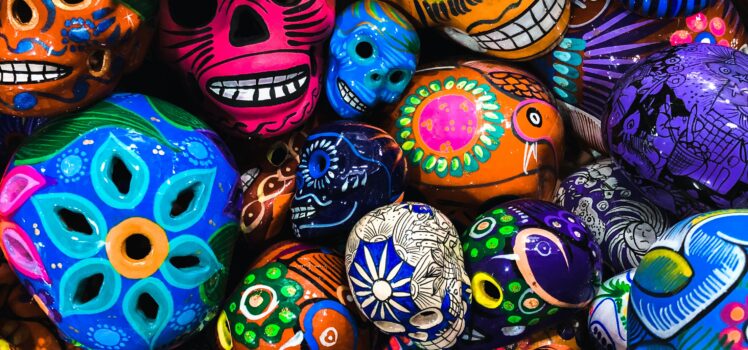Planning to travel for spooky season? Have you considered going south?
Many nations in Central and South America don’t celebrate Halloween but enjoy other holidays and ceremonies around the same date, stretching beyond October 31st into the first two days of November. If you want a unique experience, here are some cities you can visit to see festivals specific to each region and its history.
October 31st: Dia das Bruxas and Saci Day (São Paulo, Brazil)
Dia das Bruxas, or Witch’s Day, is a Brazilian version of Halloween. It is celebrated much like Halloween in the U.S. with people dressing up in costumes and attending festive parties. In addition, São Paulo often holds a zombie walk, or Marcha dos Zumbis, where fans of shows like The Walking Dead dress up as zombies and stagger and lurch en masse down the streets.
For many, the day is known as Saci Day instead. This celebrates Saci-Pererê, a trickster figure from Brazilian folklore. It is seen as an alternative to the Americanization of Halloween and a way for Brazilians to take back their culture while still having a good time.
October 31st: National Day of Masquerades (San José, Costa Rica)
Very special street parades take place on the final day of October in Costa Rica. With roots in the Spanish Carnivale and rituals of the Boruca tribe before the Spanish invasion, the National Day of Masquerades features people known as mantudos wearing colorful costumes and oversized masks made of papier-mâché. They depict characters from local mythology as well as sports and film.
While there are many places in Costa Rica where you can witness a parade, the biggest parties are said to happen in towns on the outskirts of San José. Be warned: it is a tradition for the characters to chase the spectators, so make sure you have your running shoes on!
November 1st: Barriletes Gigantes (Santiago Sacatepéquez and Sumpango, Guatemala)
In a tradition that dates back thousands of years to indigenous cultures of the region, Guatemalans fill the sky with intricate, bright kites on the first day of November. These kites are often hand-painted, can fly up to forty feet high, and take a whole team of people to launch.
Traditionally, the kites were flown over the graves of family members who had passed away as a way for the living to communicate with their ancestors and assist the dead with locating their families. Messages were sent using images on the kites and through notes attached to the kites’ ends. Today, the purpose of the kites has evolved into a means of communication with others in the community who are living. Messages on the kites have addressed pollution, governmental issues, social justice, and more.
November 1st: Tintilillo (Cartagena de Indias, Colombia)
Cartagena de Indias is a coastal city in Colombia that hosts an old tradition similar to Halloween. Families go from house to house, singing for ingredients in sancocho, a traditional soup. People in the houses who give them ingredients get a positive song while people who don’t have ingredients to give get a very different song.
While there isn’t a specific spot to visit where a large festival occurs, people traveling to Cartagena de Indias will likely witness small bands of children and adults walking with sticks and drums, ready to sing.
November 1st and 2nd: Día de Muertos (Mexico City, Mexico)
We can’t discuss Latin American fall holidays without covering Día de Muertos. And while there are celebrations throughout Mexico, Mexico City celebrates the Day of the Dead for about a week. Thousands gather at the Plaza del Zócalo to watch a parade of people dressed as mythical creatures. In the Xochimilco area south of the city, canals and floating gardens are decorated for visitors to take special gondola rides. Street parties, food festivals, and displays of ofrendas take place all over the city.


No responses yet